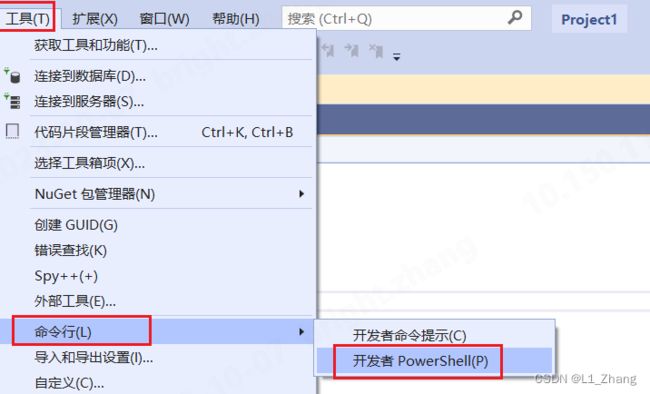二维离散傅里叶变换的实现
二维离散傅里叶变换的实现
- 1.使用Python包实现
-
- 1.1 fftshift在numpy中的实现
- 1.2 平移后的幅度谱
- 2.使用c++实现之1
-
- 2.1 FFTW库安装
- 2.2 结果比较
- 3.使用c++实现之2
- 参考文献
1.使用Python包实现
import numpy as np
import matplotlib.pyplot as plt
a=np.array([0, 2, 4, 1,6, 1, 3, 2,5]).reshape(3,3)
f=np.fft.fft2(a)
fshift=np.fft.fftshift(f)
mag=20*np.log(np.abs(fshift))
plt.axis("off")
plt.imshow(mag)
plt.show()
其中:
f:
array([[24. +0.00000000e+00j, -6. +4.44089210e-16j, -6. -4.44089210e-16j],
[-3. +1.73205081e+00j, -7.5+4.33012702e+00j, 4.5-8.66025404e-01j],
[-3. -1.73205081e+00j, 4.5+8.66025404e-01j, -7.5-4.33012702e+00j]])
fshift:
array([[-7.5-4.33012702e+00j, -3. -1.73205081e+00j, 4.5+8.66025404e-01j],
[-6. -4.44089210e-16j, 24. +0.00000000e+00j, -6. +4.44089210e-16j],
[ 4.5-8.66025404e-01j, -3. +1.73205081e+00j, -7.5+4.33012702e+00j]])
1.1 fftshift在numpy中的实现
通过官方代码,可以看出fftshift是通过np.roll实现的。
def fftshift(x, axes=None):
x = asarray(x)
if axes is None:
axes = tuple(range(x.ndim))
shift = [dim // 2 for dim in x.shape]
return roll(x, shift, axes)
对于3*3的二维矩阵,对应np.roll(x,1,(0,1)。
np.roll(f, 1,0)
array([[-3. -1.73205081e+00j, 4.5+8.66025404e-01j, -7.5-4.33012702e+00j],
[24. +0.00000000e+00j, -6. +4.44089210e-16j, -6. -4.44089210e-16j],
[-3. +1.73205081e+00j, -7.5+4.33012702e+00j, 4.5-8.66025404e-01j]])
np.roll(np.roll(f, 1,0),1,1)
array([[-7.5-4.33012702e+00j, -3. -1.73205081e+00j, 4.5+8.66025404e-01j],
[-6. -4.44089210e-16j, 24. +0.00000000e+00j, -6. +4.44089210e-16j],
[ 4.5-8.66025404e-01j, -3. +1.73205081e+00j, -7.5+4.33012702e+00j]])
与np.fft.fftshift(f)结果一致。
1.2 平移后的幅度谱
2.使用c++实现之1
#include 结果如下:
dft
(24,0) (-6,0) (-6,0)
(-3,1.73205) (-7.5,4.33013) (4.5,-0.866025)
idft
0 2 4
1 6 1
3 2 5
2.1 FFTW库安装
这里用到了FFTW c++库,具体编译及调用可参考Windows下FFTW_2.1.5的编译及使用。
这里仅列出生成lib文件,用到的vs中powetshell打开方式:

2.2 结果比较
从结果可以看出,与Python代码相比,FFTW的输出未进行shift,而且仅输出部分有用信息。
3.使用c++实现之2
第2节中的实现使用eigen MatrixXcd 来接收fftw_complex*类型。
本节实现使用double类型,通过(double(*)[2])数组指针来接收fftw_complex*类型。
#include 结果如下:
24
0
-6
4.44089e-16
-3
1.73205
-7.5
4.33013
-3
-1.73205
4.5
0.866025
可以看出,实部和虚部分别存放。
参考文献
[1] FFTW库官网
[2] Windows下FFTW_2.1.5的编译及使用
[3] FFTW 官方文档
